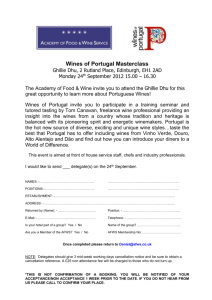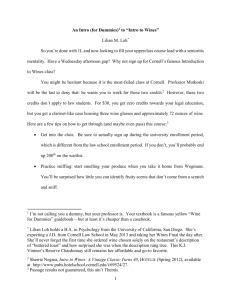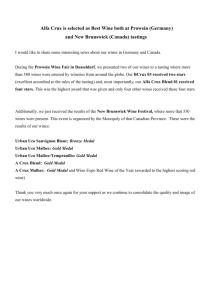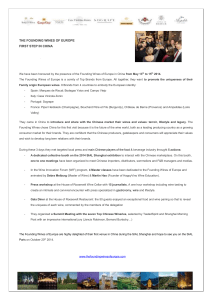Boosting Wine Sales
advertisement
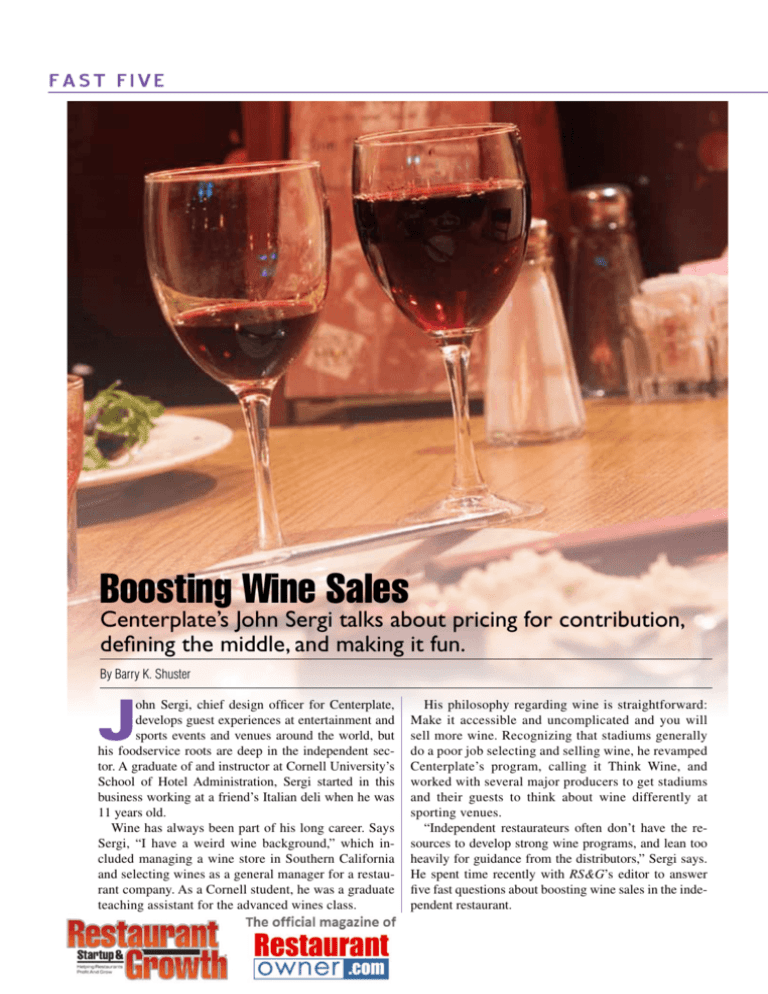
FAST FIVE Boosting Wine Sales Centerplate’s John Sergi talks about pricing for contribution, defining the middle, and making it fun. By Barry K. Shuster J ohn Sergi, chief design officer for Centerplate, develops guest experiences at entertainment and sports events and venues around the world, but his foodservice roots are deep in the independent sector. A graduate of and instructor at Cornell University’s School of Hotel Administration, Sergi started in this business working at a friend’s Italian deli when he was 11 years old. Wine has always been part of his long career. Says Sergi, “I have a weird wine background,” which included managing a wine store in Southern California and selecting wines as a general manager for a restaurant company. As a Cornell student, he was a graduate teaching assistant for the advanced wines class. 56 | PROFITABLE RESTAURATEURS ARE ALWAYS LEARNING His philosophy regarding wine is straightforward: Make it accessible and uncomplicated and you will sell more wine. Recognizing that stadiums generally do a poor job selecting and selling wine, he revamped Centerplate’s program, calling it Think Wine, and worked with several major producers to get stadiums and their guests to think about wine differently at sporting venues. “Independent restaurateurs often don’t have the resources to develop strong wine programs, and lean too heavily for guidance from the distributors,” Sergi says. He spent time recently with RS&G’s editor to answer five fast questions about boosting wine sales in the independent restaurant. FAST FIVE RS&G: John, a lot of operators use simple cost margins to price their wines. In other words, they impose a target markup — maybe 300 percent — across the list. You said that is a mistake. JS: Yes. Your pricing strategy should be based on contribution margins, not cost margins. You want to give your guests incentives to spend more on wine and experiment. I suggest a graduated pricing method. For example, you might mark up your lowest-cost wines 3 to 3¾ times and your most expensive wines 2 to 2¼ times. You don’t want to price your higher-cost wines out of reach. A graduated pricing structure makes some of the better wines look like a good value. My goal is to make guests comfortable with wine, which will encourage them to spend more on wine. I am looking at the total contribution to my margins, regardless of how that translates to specific bottle sales. RS&G: You talk about using ‘pricing as education.’ How does that work? the server to validate the choice. It makes the wine list easier for the customer to use. RS&G: What about operators who don’t want to offer more expensive wines? Maybe their market doesn’t support those kinds of sales. How do they create interest? JS: One strategy that I liked was “40 wines under $40” as part of the operator’s concept. This created excitement around the idea of good wine values. People would feel comfortable buying more than one bottle. The key is to put stuff on the menu you would drink. It shows the customer that you can have good stuff at every price point. And it creates a sense of fun around wine, which is important to make guests feel comfortable. “One strategy that I liked was ‘40 wines under $40’ as part of the operator’s concept. This created excitement around the idea of good wine values.” — John Sergi JS: You can use pricing to do what I call “define the middle.” Let’s say you have a 36-bottle list. I might put eight bottles at under $40, 16 bottles at $45 to $60 and 12 bottles at more than $60. The middle of the list — the wines that are a step up — becomes clear to the customer. Part of that strategy requires at least one of each of the popular varietals offered at the lower range. For example, you don’t want three cabs (cabernet) under $40. The guest should be able to get an appropriate wine at the lower end. Putting 40 percent to 50 percent of your wines, with several choices of each variety, in the middle price range, makes it clear to the guest that these are a step up and can encourage him or her to spend a little more without the embarrassment of asking RS&G: You caution operators from relying solely on distributors and suppliers to choose wines, since they are often promoting certain wines based on their own sales goals. If you’re not an expert, whose advice can you lean on? JS: Make friends with the local wine retailers. They know what is popular and have tried most of the wine. They will be happy to help you, because if you are serving wines they carry it will tacitly promote their sales, as well. RS&G: Any parting wisdom for operators trying to boost their wine sales? JS: Make it fun — for you, your staff and your guests. Remember that overinforming guests on wines can be a source of intimidation. Your mission is to make wine RS&G more accessible. JUNE 2014 | www.RestaurantOwner.com 57
